The pressure regulator is attached to the left frame side member
It adjusts the brake fluid pressure in the brake circuit of the rear wheels, depending on the vehicle load, which increases directional stability when braking
By monitoring the load on the rear axle through a load spring, it limits the fluid pressure in the rear brake circuit.
If the regulator fails, it is replaced.
After replacing the adjuster or rear suspension components, it is necessary to readjust the position of the load spring relative to the rear axle.
Replacing the regulator
Draining the brake fluid from the rear circuit, article - Replacing brake fluid and bleeding the brake system of a Gazelle car
Disconnect the load spring from the rear axle.
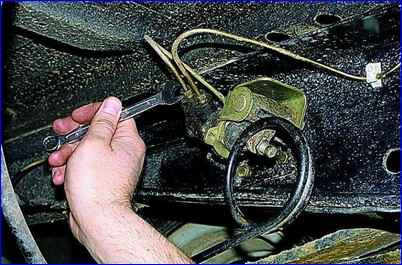
Use a 12mm wrench to unscrew the two brake pipe fittings.

Keeping the bolts from turning with a 12mm socket and a 13mm wrench, unscrew the two nuts on the regulator mounting bolts.
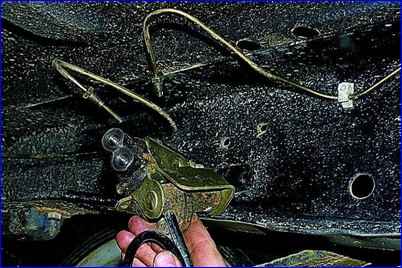
Remove the bolts and remove the regulator from the car along with the bracket
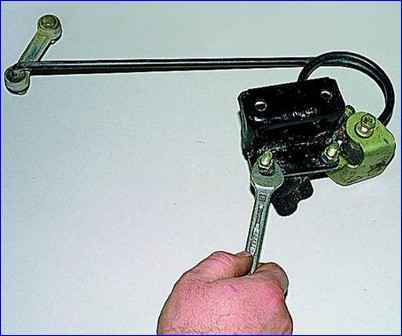
Use a 13mm wrench to unscrew the two nuts

Remove the bracket from the regulator.
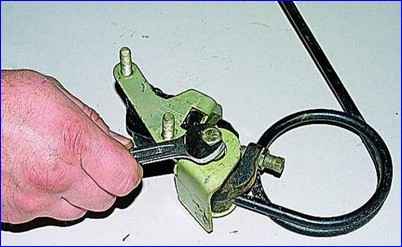
Use a 12mm wrench to unscrew the locking bolt.
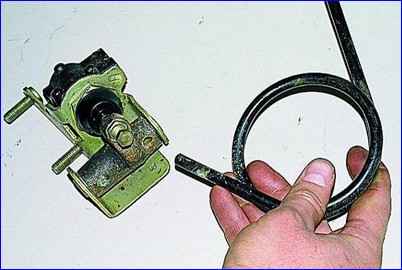
Remove the load spring
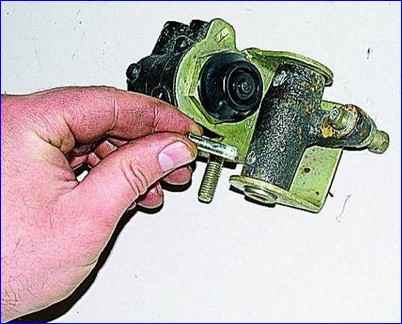
Remove the pin

Remove the lever axis
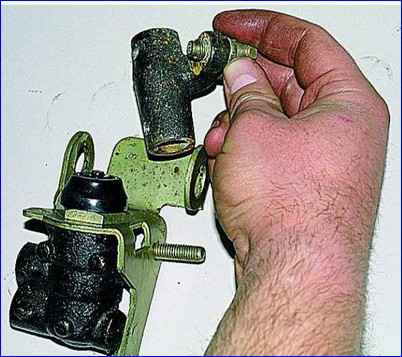
Remove the lever
Having rearranged the parts onto the new regulator, install it in the reverse order.
Bleed the system and adjust the regulator.
Adjusting the regulator
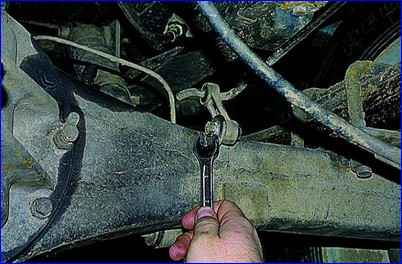
Using a 13mm wrench, unscrew the strut nut and disconnect the load spring from the rear axle.
Lower the load spring down.

Use a 14mm wrench to unscrew the locknut of the adjusting bolt

Use a 10mm wrench and turn the adjusting bolt
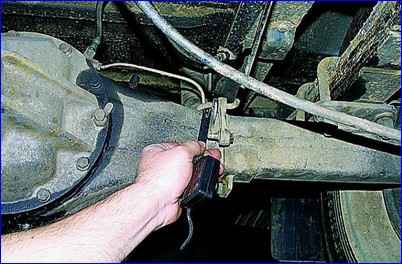
Set the distance between the center of the bracket hole and the axis of the regulator within 28–32 mm (for 4x2 buses); 36–40 mm (for 4x4 buses); 13–17 mm (for other types of cars)
Hold the adjusting bolt and tighten the locknut.
Attach the lower end of the rack to the rear axle bracket.
After adjustment, you should check the operation of the regulator, for which, at a speed of 50–60 km/h on hard dry road On the road surface, vigorously press the brake pedal, while an assistant should stand on the side and watch the wheels.
If the regulator is in working order and correctly adjusted, there should be a slight advance in the locking of the front wheels relative to the rear ones.
If the opposite happens, then after unscrewing the locknut of the adjusting bolt, unscrew the bolt half a turn.
If the front wheels lock before the rear wheels, turn the adjusting bolt half a turn and tighten the lock nut.





